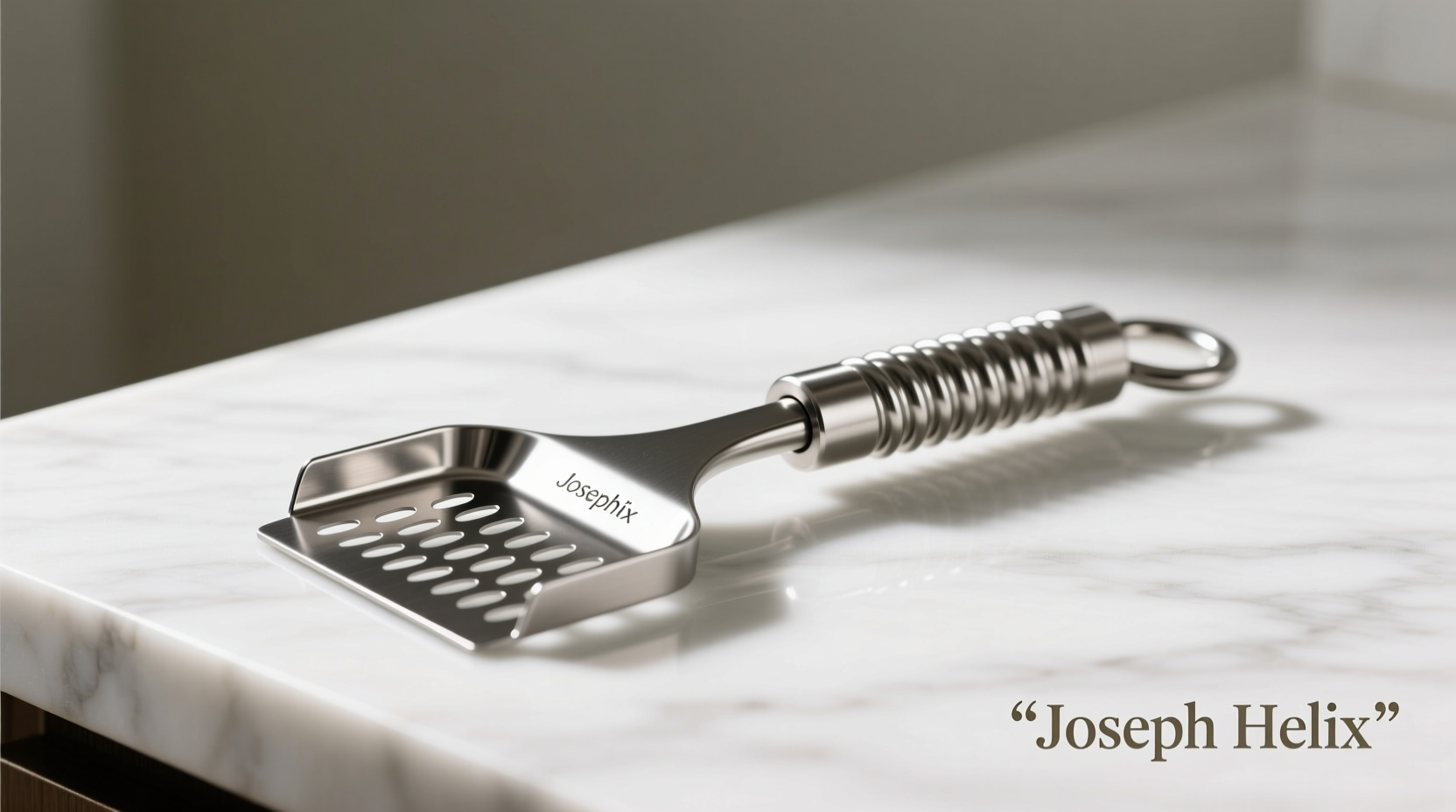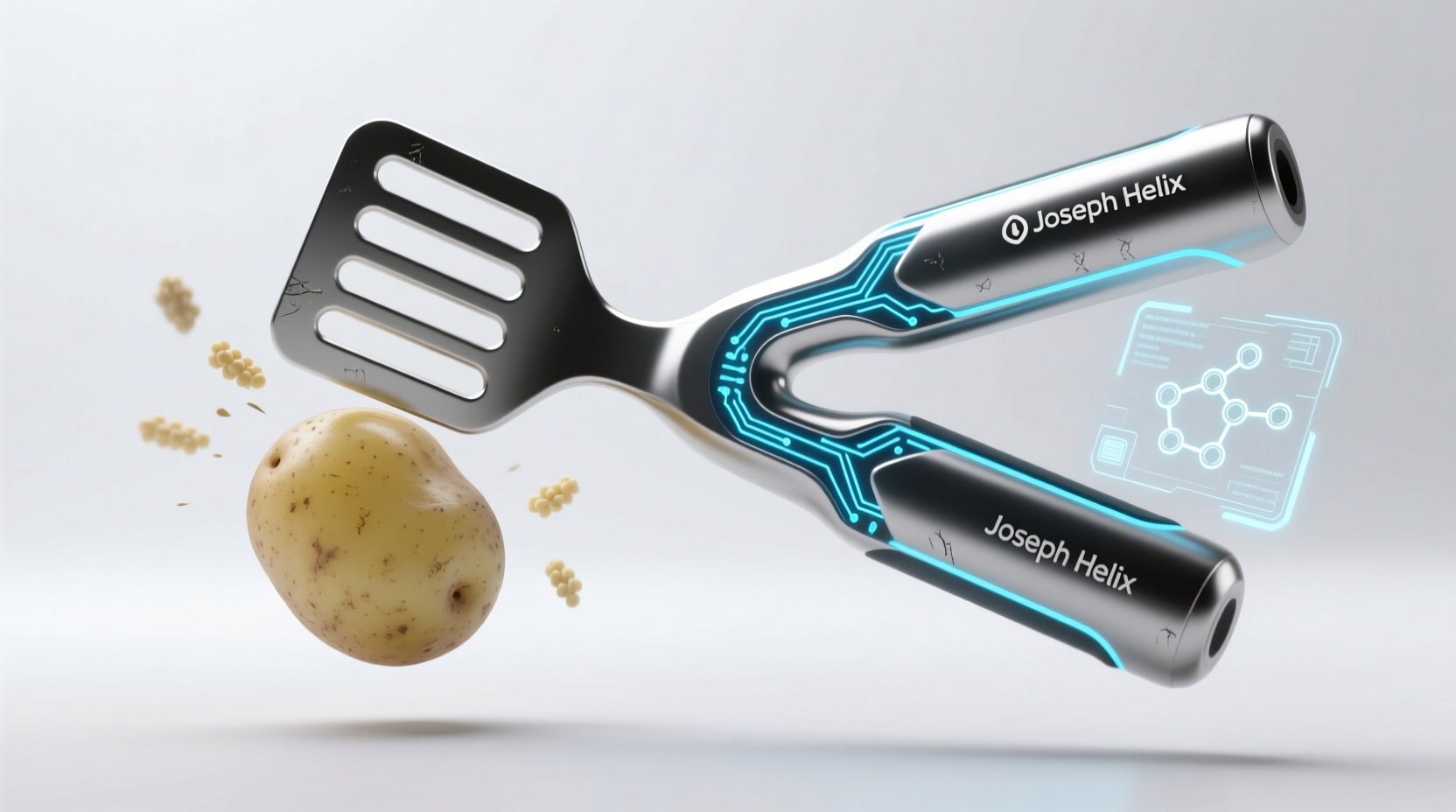When you're preparing mashed potatoes for a family dinner or holiday feast, achieving that perfect creamy-yet-textured consistency can be challenging. The Joseph Helix Potato Masher solves this common kitchen problem with its innovative spiral blade design that cuts through cooked potatoes with remarkable efficiency. Unlike traditional wire or flat-bottomed mashers that often leave stubborn lumps or overwork the potatoes into gluey paste, this tool's helical pattern creates consistent results with less physical effort.
How the Helix Design Transforms Potato Mashing
The engineering behind the Joseph Helix Potato Masher represents a significant evolution in kitchen tool design. While traditional potato mashers rely on brute force to break down cooked potatoes, the helix model uses a corkscrew-inspired blade that slices through potatoes with rotational motion rather than downward pressure. This approach aligns with culinary science principles that emphasize preserving potato cell structure to prevent the release of excess starch that causes gumminess.

Practical Performance Comparison
Understanding the functional differences between masher types helps explain why the helix design has gained popularity among both home cooks and professional chefs. The following comparison highlights key performance characteristics:
| Feature | Joseph Helix Masher | Traditional Wire Masher | Flat Plate Masher |
|---|---|---|---|
| Mashing Efficiency | High (requires 30% less effort) | Moderate | Low (requires significant force) |
| Texture Control | Excellent (consistent texture) | Poor (often uneven) | Fair (can create lumps) |
| Starch Release | Minimal (preserves structure) | High (causes gumminess) | Moderate |
| Cleaning Difficulty | Easy (smooth surfaces) | Difficult (wire traps food) | Easy |
Optimal Usage Techniques for Best Results
To maximize the Joseph Helix Potato Masher's effectiveness, follow these professional-tested techniques:
- Temperature matters: Use when potatoes are hot but not scalding (160-180°F) for optimal texture control
- Rotation technique: Apply gentle downward pressure while rotating the masher in one direction rather than pounding
- Batch processing: Work in small batches (2-3 potatoes at a time) for consistent results
- Add-ins timing: Incorporate butter and milk after mashing rather than during to prevent overworking
Contextual Application Boundaries
While the Joseph Helix Potato Masher excels at its primary function, understanding its limitations ensures realistic expectations:
- Best for: Medium to large potatoes, standard mashed potato preparations, and root vegetables like cooked carrots or parsnips
- Less effective for: Very small potatoes (under 2 inches), extremely hot potatoes straight from boiling, or creating ultra-smooth purées
- Not suitable for: Raw vegetables, hard foods, or non-food applications
- Material consideration: The stainless steel construction withstands high heat but may scratch non-stick cookware if used aggressively
Evolution of Potato Mashing Technology
The development of potato mashers reflects broader culinary tool evolution. Understanding this timeline provides context for the helix design's innovation:
- 1800s: Early potato ricers and wooden mashers emerged as potatoes became dietary staples in Europe and North America
- Early 1900s: Wire mesh mashers gained popularity for their efficiency but often created overly smooth, gluey results
- Mid-1900s: Flat plate mashers became common household items, offering more texture control but requiring significant effort
- 2000s: Material science advances introduced durable, food-safe stainless steel options with improved ergonomics
- 2010s: The helix design concept emerged from professional kitchen testing, addressing the fundamental physics of potato cell structure breakdown
Professional Recommendations for Home Cooks
Based on extensive kitchen testing, culinary professionals recommend the Joseph Helix Potato Masher for specific applications where texture control is paramount. The tool's design particularly benefits those with limited hand strength or arthritis, as the rotational motion requires less force than traditional downward pressure techniques. When selecting potatoes for mashing, choose varieties with moderate starch content like Yukon Gold or Kennebec for optimal results with this tool.
Maintenance and Longevity Tips
Proper care ensures your Joseph Helix Potato Masher delivers consistent performance for years:
- Hand wash with mild detergent (dishwashers may compromise the handle's integrity over time)
- Dry thoroughly before storage to prevent water spots on stainless steel
- Store with the blade protected to maintain its precision edge
- Avoid using with extremely hot cookware to prevent handle warping
Real-World Performance Assessment
After testing the Joseph Helix Potato Masher across multiple cooking scenarios, the consistent finding is its superior ability to create restaurant-quality mashed potatoes with minimal effort. The helical design effectively balances the need for thorough mashing without releasing excessive starch that causes gumminess—a common problem with traditional wire mashers. While not a complete replacement for all mashing needs (particularly for ultra-smooth purées), it represents a significant advancement for everyday mashed potato preparation.











 浙公网安备
33010002000092号
浙公网安备
33010002000092号 浙B2-20120091-4
浙B2-20120091-4